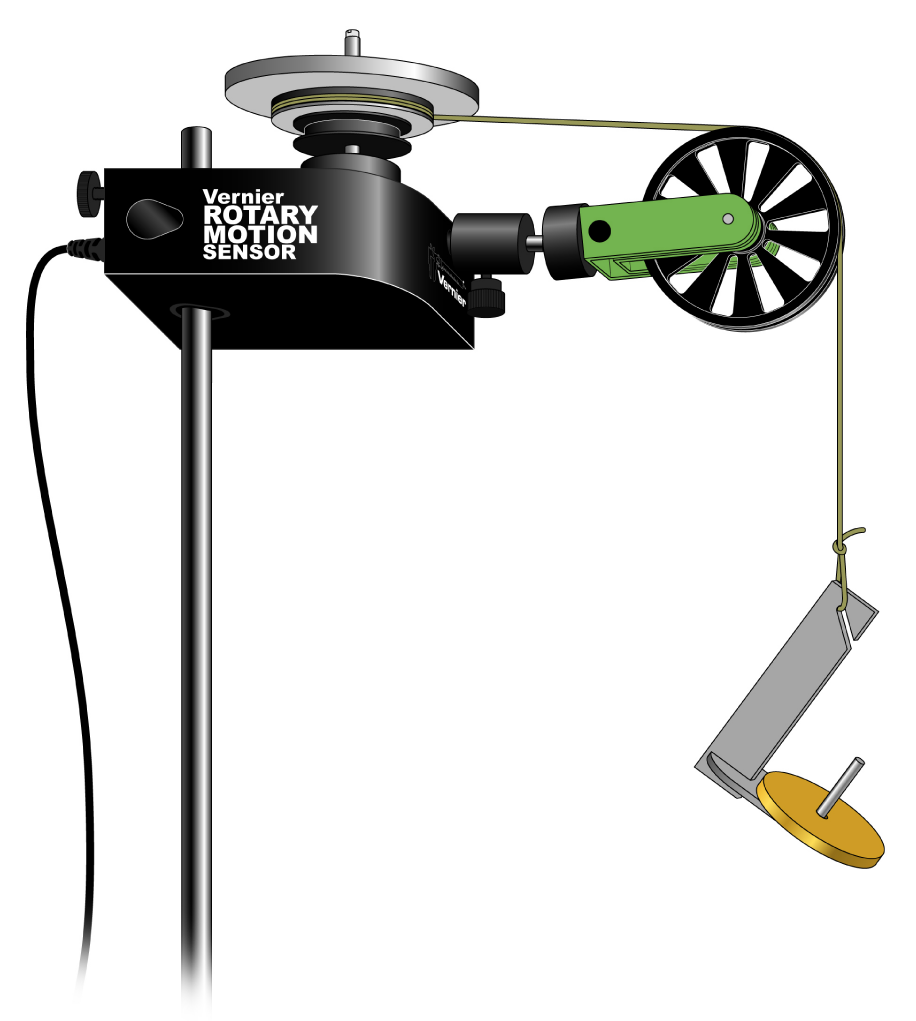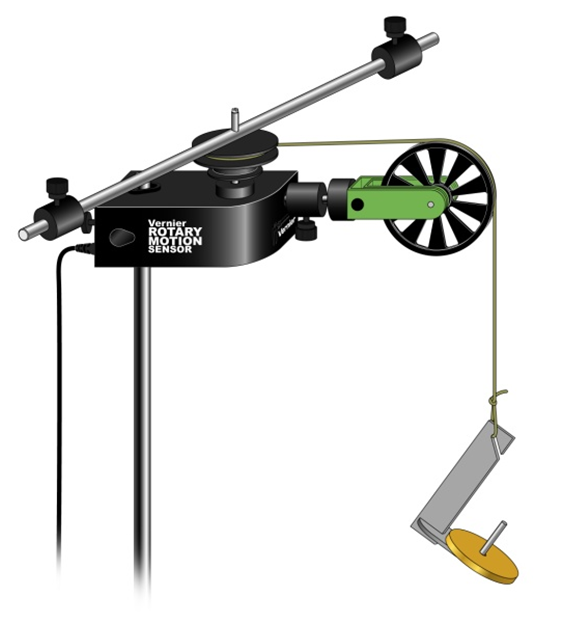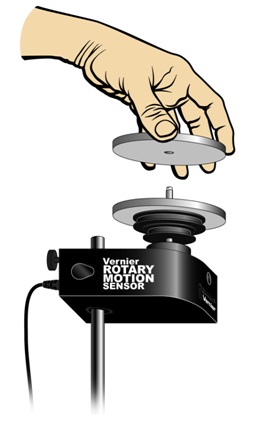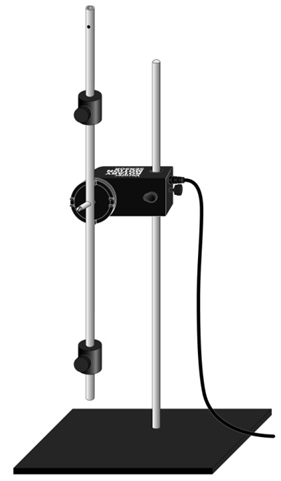Here are some experiment ideas you can try with a Rotary Motion sensor.
Go Direct® Rotary Motion Sensor (
Atwood’s Machine
Attach the 3-step pulley to the rotating shaft. Use the thumb screw to attach the Rotary Motion Sensor to a ring stand. Attach each end of the string to a mass and run the string over the pulley. Use the Rotary Motion Sensor to determine the acceleration of the system.
Related to Experiment 10 − Atwood’s Machine from Physics with Vernier.

Moment of Inertia of a Disk
Requires Rotational Motion Accessory Kit (
Attach an Ultra Pulley to the Rotary Motion Sensor. Attach the 3-step pulley to the rotating shaft. Attach the disk to the 3-step pulley. Attach a string to the underside of the hub. Attach the Ultra Pulley to the Rotary Motion Sensor using the Ultra Pulley Swivel Mount. Run the string over the Ultra Pulley and attach a weight to the end of the string. Use the weight to apply a torque to the system while the Rotary Motion Sensor measures the angular acceleration.
See Advanced Physics with Vernier—Mechanics
● Experiment 13 − Rotational Dynamics

Moment of Inertia of Point Masses
Requires Rotational Motion Accessory Kit (
Use the same set up as described in the previous section. This time attach a rod with two masses to the 3-step pulley. Use the weight to apply a torque to the system while the Rotary Motion Sensor measures the angular acceleration.
See Advanced Physics with Vernier—Mechanics
● Experiment 13 − Rotational Dynamics

Conservation of Angular Momentum
Requires Rotational Motion Accessory Kit (
Attach the disk to the 3-step pulley. Give the disk a spin. While the system is rotating, drop a second disk onto the first disk. Observe the change in the angular velocity before and after the mass is added to the system.
See Advanced Physics with Vernier—Mechanics
● Experiment 14 − Conservation of Angular Momentum

Motion of a Physical Pendulum
Requires Rotational Motion Accessory Kit (
Attach the 3-step pulley to the Rotary Motion Sensor with the small step next to the sensor body. Attach the center of the rod with two masses to the pulley. Position the masses so they are not symmetric. Position the sensor so the face of the pulley is vertical. Start the pendulum swinging, and determine the angular acceleration as a function of the angle.
See Advanced Physics with Vernier—Mechanics
● Experiment 17 − Pendulum Periods
● Experiment 18 − Physical Pendulums

